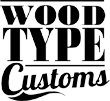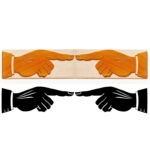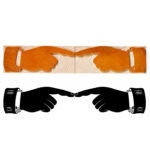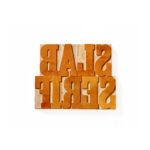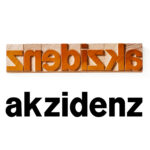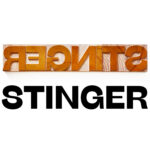Transylvanian Heraldry
This is a letterpress project developed by Petrescu Press, that for several reasons, we decided to take the time and write about; these are some of them: – the entire project is started from scratch, the design that was first to be conceived, with the wood type made after; – the design is made so that both wood type and prints can be valued; – we tried to bring purpose in the product, beyond the aesthetic.
Before mentioning anything else, we would like to bring some context, through the story that generated this project.
It is about 200 000 people, who now live in Germany. They were not refugees, but migrants. They were not Muslim, but German. And they left our country approx. 30 years ago. They are the Sachsen (Transylvanian Saxony) a people of germanic origins, that inhabited the central region of Romania for the past 800 years, peacefully coexisting alongside the romanian, hungarien, and secui nationalities.
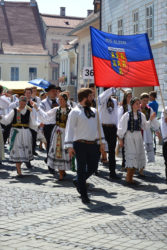
They left behind some of the best architecture we have, medieval cities and hundreds of villages, the shell of an entire civilization, that is now scattered throughout Germany.
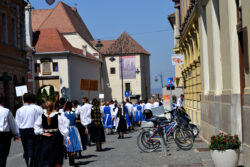
This summer, 20 000 of them, decided to meet in the old country, in Hermannstadt – Sibiu, (my hometown) the capital of the Siebenburgen. It was a three day festival, after which they went on to visit more of the country.
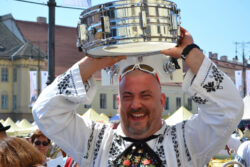
We wanted to take part and try to re-connect, find out more about the people who left and their descendants.
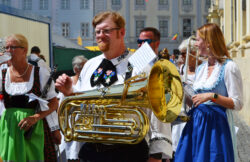
We decided to put our skill and abilities to good use. Both letterpress and wood type have excellent time endurance qualities. We decided the Heraldic symbols of the sachsen regions, were the best artistic message, an esthetic link between a group of people, it’s history and place of origin. We went on to redraw and redesign the coat of arms of eleven of the Saschsen regions collected from the archives of the “Friedrich Teutsch Dialogue and Culture Center”; which represents the “Seven Chairs” (Sieben Stühle – Siebenburgen) on what was called the King’s Land (Königsboden); – consisting of the “Main Chair” (Hauptstuhl) in Sibiu (Cybininum-Hermannstadt) and the seven “Secondary Chair” (Nebenstühle): Orastie (Broos), Sebes (Mühlbach), Miercurea Sibiului (Reußmarkt), Sighisoara (Schäßburg), Nocrich (Leschkirch), Cincu (Großschenk) and Rupea (Reps).
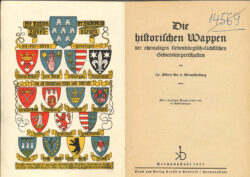
Image courtesy to A. Bándi from “Friedrich Teutsch Dialogue and Culture Center” (image found in an interwar publication)
The Seica Chair (Schelker) and the Mediaş Chair (Mediasch) were later formed, named “Two Chairs” (Zwei Stühle). The Braşov (Kronstadt) and Bistriţa (Bistriß) districts were later formed.
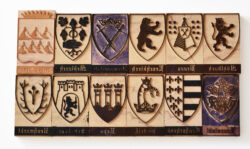
Each was designed as a separate printing block, the graphic with the text attached, from a single piece of wood. This generated the size: 16×27 cicero.
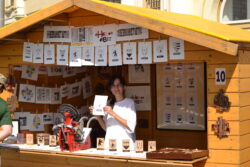
The print was made with an Adana 8×5 printing press, on an A5 format. The Adana is practical as we could bring it to the event, and have people try out printing on the spot.
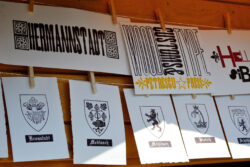
The designs were replicated in the most exact manner, where possible, as in the “Sieben Stuhle” coat of arms. This is made after an old wood cut, and represents the first mention of the presence of the Saschsen’s administrative regions, in the year of 1349.
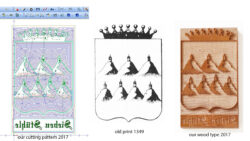
In other cases where the available graphic was less detailed, we found replacements.
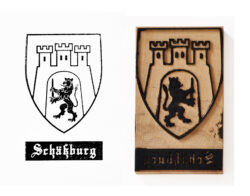
And in some cases, we decided to replace the graphic entirely. For example this bear belonged to Berlin, until 1934. Since they are not using it at this time, and it would take me the better part of a day to redraw and design cutting patterns for it, I figured I might as well draw a proper bear for Leschkirch.

And in the case of Bistritz, the original design was pixeled, that we decided to take the time and draw it from scratch: a goose with a crown on it’s head, in a crown, carrying a horse shoe in it’s beak.
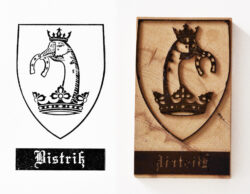
The interesting thing about a coat of arms, is what we recognize today as a logo, a brand image, but in their true, original purpose they were simply the best way available, at the time, to write your name; a visual representation for the verbal description for a house symbols. People could not understand letters, but were able to read images.
Heraldry wrote words, when letters were not available. In a way these are the ancestors to our modern day prints and posters.
But, we also made mistakes. Only latter we found out the lion from Muhlbach, had two tails. The second was a gift for bravery in battle; when the King asked to reward them with something unique, anything at all, that is what they asked for; this information was received from the historian Gerhard M. Wagner.
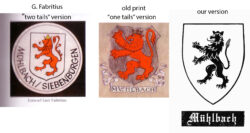
And we must talk about the wonderful people we met: historians, artists, artisans, students, designers, retired typographers, retired wood type maker, traditional paper maker, parents and grandparents. The kids were the most enthusiast printers we had.
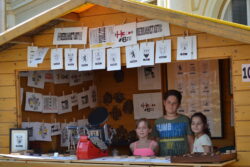
If you appreciate this project, and want any of these items, contact us.
We would like to thanks the people who supported us: Gerhard M. Wagner, A. Bándi, W. H. Rehner, Daniela Bunet, Winfried Ziegler, Lerner Helmut.
